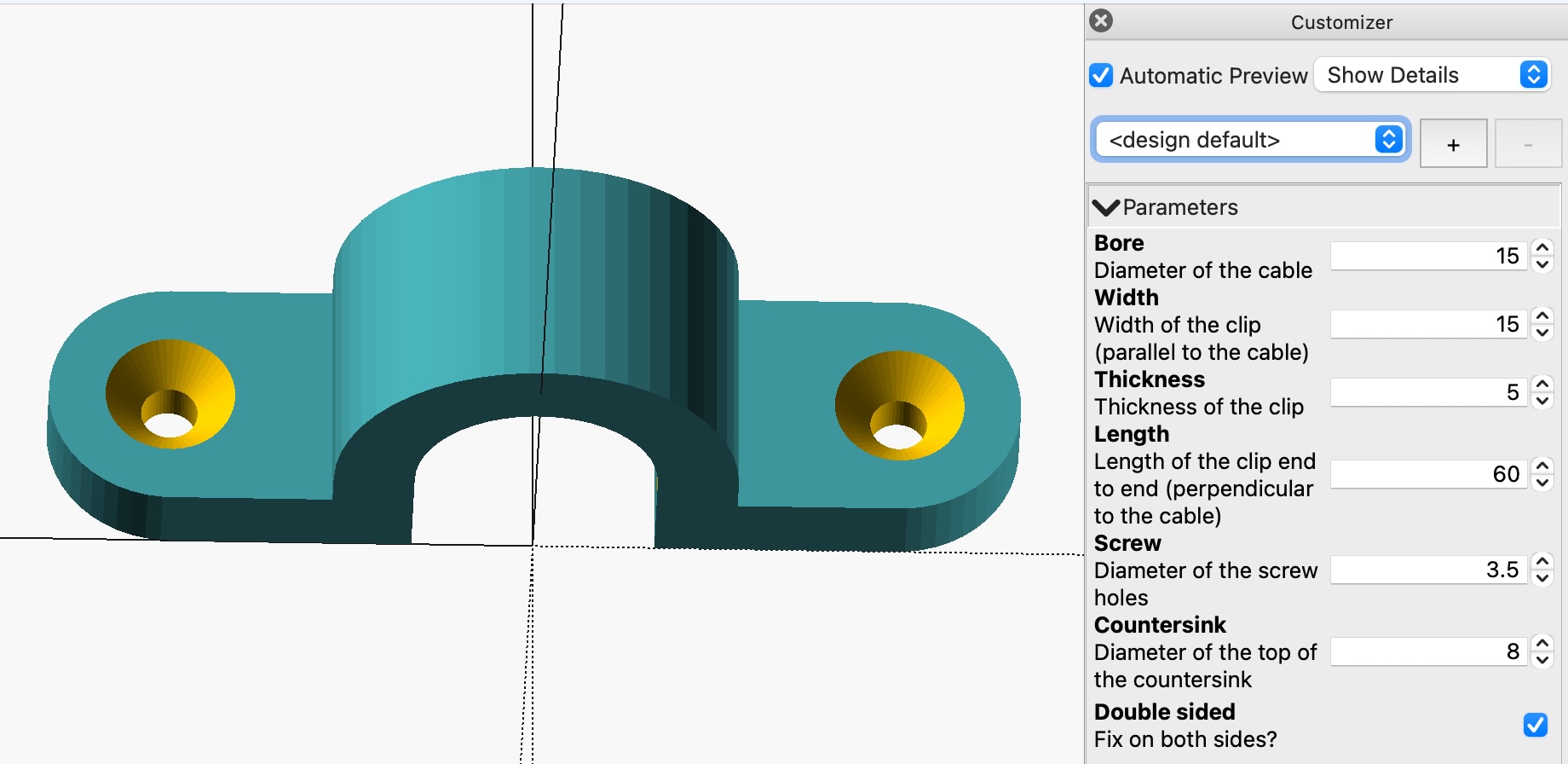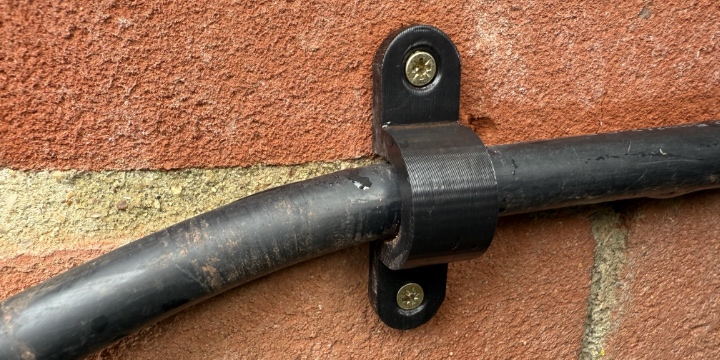A Customisable Cable Clip

This design came about because I wanted a clip to attach a car-charging cable to the wall. You can, of course, easily buy these, but I only needed one, and for an unusually thick cable. 3D printing means I can get exactly the part I want, in the quantity I want, and saves a trip to a DIY store or a wait for the postman.
As this is probably not the last time I’ll want to secure a cable somewhere, I decided to do something a bit more general. OpenSCAD’s built-in Customizer allows you to define parameters for your model, which can then be easily and interactively tweaked as shown in the image above.
More importantly, this has become a de facto standard of sorts, and sites such as MakerWorld directly support it. If you upload an OpenSCAD file alongside your finished project, users can customise the model right there on the site before downloading it.
Providing this UI for your model is almost comically easy. You just add appropriate comments to your top-level variables like so:
// Diameter of the cable
Bore = 15;
// Width of the clip (parallel to the cable)
Width = 15;
// Thickness of the clip
Thickness = 5;
(In fact, it’s marginally harder to stop things being customisable; you need to add a special /* [Hidden] */ comment. I didn’t originally plan to coffee cup sleeve design customisable, but it was as little effort to tidy up and document the variables as it would have been to prevent it.)
The effortless way this falls out of normal use of OpenSCAD is incredibly powerful, and demonstrates the benefits of rich representations. Rather than just being, say, a list of triangles, like an STL file, an OpenSCAD file is a program to produce your design. More importantly, it’s a declarative program, which lends itself to reuse in contexts other than the one in which it was originally created. OpenSCAD itself looks a lot like a traditional programming environment, with a syntax-highlighted text editor and a “run” button, but there’s no reason that this needs to be the case. With a bit of thought, all sorts of formats could have this level of abstraction, and benefit from the flexibility that it provides.
- Cable clip on MakerWorld
- cableclip.scad OpenSCAD file
